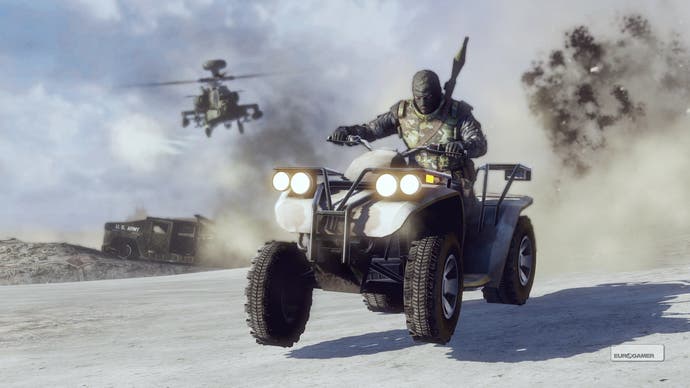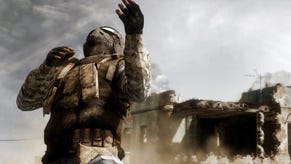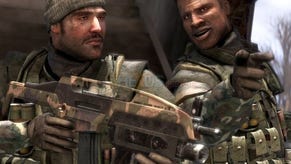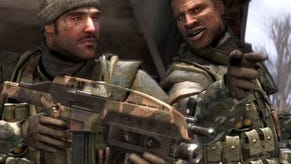Battlefield: Bad Company 2
Post-modern warfare.
It's the firefights that form the meat of the game, however, and they play to the strengths of the enhanced demolition engine without ever making the mayhem feel gimmicky or forced. It's just what happens when you let rip with bullets and grenades in built-up areas.
The vast array of weaponry available to you means that there's always a different way of approaching any given encounter. As in the previous game, collectable weapons can be picked up from dead enemies, or taken from weapon crates, and these can then be swapped out at supply points in each level. This immediately frees the game from the restrictions of a genre that likes to dictate what firepower you can use to tackle each level, allowing the player to find their own style of combat and finesse it throughout the game.
Bad Company 2 is, arguably, still a game on rails, but the track is long and broad rather than a narrow corridor. Between the size of the stages, the weapon flexibility and the scope offered by the collapsing scenery, no two fights play out the same - even though they're every bit as reliant on invisible triggers as anything in Call of Duty.
The enemies don't quite match up to the breadth of gameplay approaches on offer, however. They're not the dimmest bunch in shooter history, but they're unlikely to trouble anyone expecting a tactical shooter. Even on the hardest difficulty setting, their tactics generally boil down to darting in and out of safety, firing wildly. The same isn't true of your AI companions, who walk a fine line between admirable efficiency and deliberately not killing everyone so you've still got something to do. They're also invincible, which looks a little strange as they stroll unharmed through a mortar strike while you cling to life by a thread.
The destruction compensates for these minor wobbles. Even at the end of my second playthrough, I was still being caught off guard by the temporary nature of cover in Bad Company 2. The instinct to crouch by some wall which magically repels all rocket attacks is so ingrained that having that wall showered all over me after one hit takes some getting used to.

The physics is noticeably more sophisticated than the previous game; it's no Red Faction Guerrilla in the demolition stakes, but it's enough to wriggle another limb free from the straitjacket of traditional FPS design. The ability to shoot through wooden barriers, topple brick walls and eventually demolish entire buildings utterly changes the way you play. Both defense and attack become far more complex problems in a constantly changing battleground.
Control is crisp, with the heavy stiffness evident in the beta test replaced with a responsive scheme that adds heft to your movements while retaining the agility required to keep pace with the blistering action. It's a lovely-looking game as well, despite some obvious pop-in and repetitive character models. DICE has eschewed the glossy, bloom-heavy look of most of its rivals, preferring instead to craft a world rich in detail and texture, with impressive vistas that wallow in their generous draw distance. Explosions are predictably impressive, but it's their aftermath that brings the world to life. Smoke, dust, sand and water spray all linger in the air.
Bad Company 2's single-player campaign would be a genre standout in any year, but it's online that the game comes into its own. It's no wonder that the box bears the tagline "Defining Online Warfare", since the multiplayer component here is a confident, muscular distillation of everything DICE has been building up to over the past decade. This is the online shooter at its most streamlined, most thoughtful, most exhilarating.







